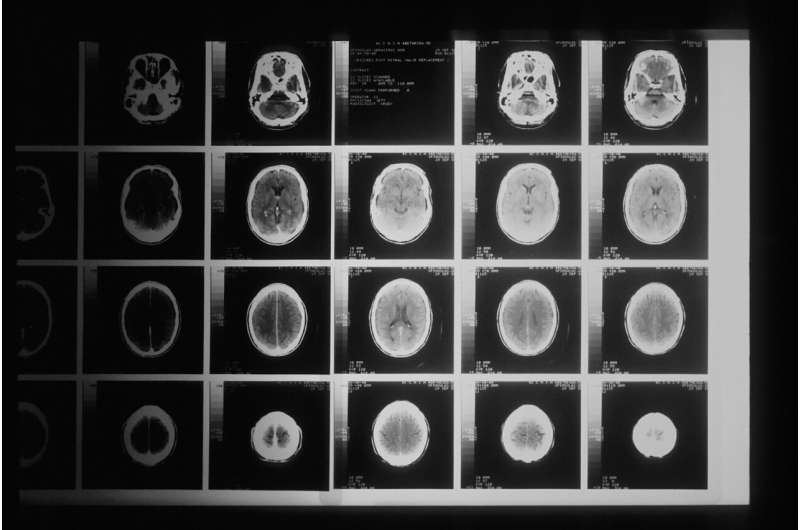Credit: Unsplash/CC0 Public Domain
As 5-year relative survival rates differ greatly between cancer patients treated at early or late stages, early detection of tumors is of great importance to cancer therapy. Cathepsin B (CTSB) is considered as a potential biomarker for the early diagnosis of cancers due to its increased expression in the early stage of many cancer types. As a result, the effective and precise monitoring of CTSB activity offers a way out.
In a recent study published in Angewandte Chemie International Edition, a research team led by Prof. Liang Gaolin and Prof. Yuan Yue from the University of Science and Technology of China (USTC) of the Chinese Academy of Sciences realized the specific photoacoustic (PA) imaging of CTSB-overexpressing tumors through CTSB-initiated intracellular self-assembly of small-molecule PA imaging probes into nanoparticles.
PA imaging is a new type of non-invasive and non-ionizing biomedical imaging method, which has a huge potential in biomedical research and disease diagnosis due to its excellent tissue-penetrating depth and high spatial resolution.
To meet the challenge of early tumor detection, the researchers, using the self-assembly signal enhancement of PA imaging probe, designed a CTSB-activatable near-infrared PA probe Val-Cit-Cys(SEt)-Lys(Cypate)-CBT (Cypate-CBT). When Cypate-CBT enters CTSB-overexpressing tumor cells, its disulfide bond is reduced by intracellular glutathione and its specific cleavage substrate Val-Cit is cleaved by CTSB to produce Cypate-CBT-Cleaved, which undergoes an intermolecular CBT-Cys click reaction to yield Cypate-CBT-Dimer. The Cypate-CBT-Dimer then self-assembles into near-infrared nanoparticles Cypate-CBT-NPs.
This approach effectively increases local probe concentration, prolongs the retention time, and enhances the PA signal of the probe for CTSB activity imaging. The researchers found that compared with unmodified Cypate, the newly designed probe showed a 4.9-fold and 4.7-fold PA signal enhancement in CTSB-overexpressing MDA-MB-231 cancer cells or tumors respectively.
The findings of the study show the possibility of designing more "smart" PA probes for the precise diagnosis of tumors.
More information: Chenchen Wang et al, Cathespin B‐Initiated Cypate Nanoparticle Formation for Tumor Photoacoustic Imaging, Angewandte Chemie International Edition (2021). DOI: 10.1002/anie.202114766
Journal information: Angewandte Chemie International Edition
Provided by University of Science and Technology of China
























